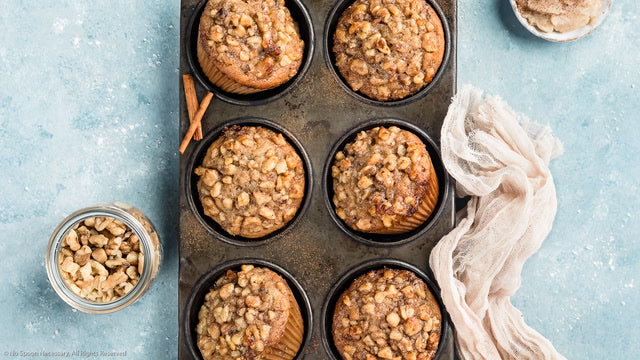The history of cast iron bakeware is as rich and textured as the material itself, having played a pivotal role in kitchens around the world for centuries. From its early beginnings to its modern resurgence, cast iron bakeware has remained a staple for kitchen professionals and home cooks alike. But what makes this material so enduring and beloved?

Ancient Origins of Cast Iron
The story of cast iron begins in ancient China during the Han Dynasty around 220 AD. The Chinese were among the first to master the art of casting iron, a skill that gradually spread to Europe by the Middle Ages. The technology of casting iron revolutionized cooking by providing durable and versatile tools that could withstand high temperatures and distribute heat evenly, a feature that was particularly advantageous for baking.
Cast Iron in Europe
As cast iron made its way to Europe, it became essential for hearthside cooking. The 16th century saw an increased demand for cast iron cooking implements in England and France. The material's ability to maintain consistent heat made it ideal for baking breads and pastries, a fact that was not lost on European bakers who preferred it over other materials.
By the 18th century, advancements in manufacturing processes allowed for the production of more refined and intricate cast iron bakeware, further cementing its place in the culinary world. This era saw the creation of many classic designs that are still popular today, such as cast iron muffin pans. For more on the specifics of cast iron muffin pans, you can read about whether they are safe for modern use.
American Influence and Industrialization
The industrial revolution of the 19th century brought about significant changes in the production of cast iron bakeware. In the United States, companies like Griswold and Wagner Ware began mass-producing cast iron products, making them more accessible to the average household. This period marked the golden age of cast iron in America, where it became a symbol of culinary tradition and craftsmanship.
In America, the popularity of cast iron was also fueled by the country's expanding frontier. Cast iron bakeware was durable enough to withstand the harsh conditions faced by pioneers and was a common sight in the kitchens of settlers. This rugged reliability made it a preferred choice for baking everything from cornbread to pies.
Modern Resurgence
Although the mid-20th century saw a decline in the use of cast iron due to the advent of nonstick and aluminum alternatives, the late 20th and early 21st centuries have witnessed a resurgence of interest in cast iron bakeware. Modern chefs and kitchen enthusiasts appreciate its eco-friendly nature and unparalleled heat retention capabilities.
Today, cast iron bakeware is celebrated not only for its functionality but also for its ability to impart a unique flavor to dishes. Many professional chefs and bakers swear by its use for achieving the perfect muffin crust or evenly baked bread. The versatility of cast iron bakeware extends beyond the kitchen, as it can be used on stovetops, in ovens, or even over open fires.

Why Kitchen Professionals Love Cast Iron
For kitchen professionals, the appeal of cast iron bakeware lies in its durability, versatility, and performance. Unlike other materials, cast iron can be used for a wide range of culinary techniques, from baking and roasting to frying and grilling. Its ability to retain heat makes it ideal for slow-cooking dishes that require even heat distribution.
Moreover, cast iron's natural nonstick surface, when properly seasoned, offers a chemical-free alternative to nonstick coatings that can degrade over time. This makes it a sustainable choice for environmentally conscious chefs.
FAQs
What is the history of cast iron bakeware?
The history of cast iron bakeware dates back to ancient China and later spread to Europe and America. It has been a staple in kitchens for centuries due to its durability and heat retention.
Why is cast iron bakeware popular among chefs?
Chefs prefer cast iron bakeware for its versatility, durability, and ability to impart unique flavors to dishes. Its natural nonstick surface is also an added benefit.
How has cast iron bakeware evolved over time?
While initially made by hand, the industrial revolution allowed for mass production, making it more accessible. Today, cast iron is experiencing a resurgence due to its eco-friendliness and superior cooking properties.
For those interested in exploring new ways to use their cast iron bakeware, this link offers a variety of creative recipes.
This article contains affiliate links. We may earn a commission at no extra cost to you.





Leave a comment
This site is protected by hCaptcha and the hCaptcha Privacy Policy and Terms of Service apply.